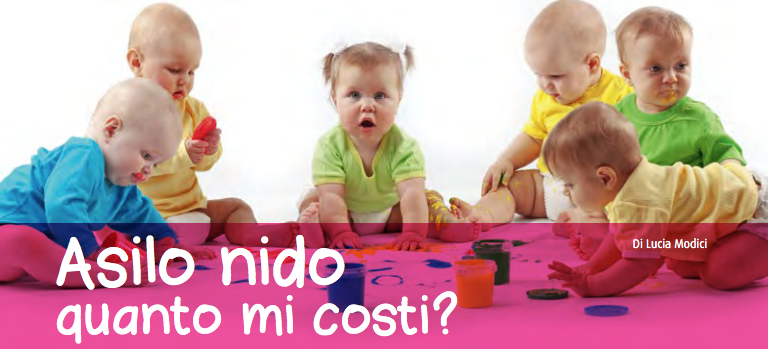
After motherhood, whether it's the mandatory 5 months or the additional optional period, it's time for every mother to go back to work. Thus arises the question that torments so much: who do I leave my child with? In Italy, children under 3 who use public educational services are 12.6% of the population in that age group. In the case of nursery schools, the average value is 11.6%, and it goes from 23.7% in Emilia-Romagna to 1.2% in Calabria (a highly variable percentage, therefore, based on the region of reference). As far as the type of service is concerned, nursery schools or micro-nursery clearly prevail, representing 80.5% of the places available throughout the national territory; 10.5% is instead covered by the spring sections , i.e. those that welcome children aged 24-36 months in nursery schools, while the so-called ' supplementary services for early childhood ' (nursery in a home setting, play areas and centers for children and parents) contribute 9% .
Publicly owned services account for 36% of the total (in the 2014-'15 educational year 13,262 units of socio-educational services for early childhood were surveyed nationwide) and offer 51% of the overall places : public facilities in fact, they are on average larger than the private ones and have an average capacity of 38 seats against the 21 of the others.
HOW MUCH DO THE NURSERY CENTERS COST (TO THE STATE AND TO THE FAMILIES)?
According to an Istat research published at the end of 2017 and referring to the two-year period 2014-'15 (last survey on the subject), for socio-educational services aimed at early childhood the Municipalities, in 2014, had committed 1 billion and 482 million euros, the 5% less than the previous year. The social expenditure of the Municipalities for these services had in fact increased at an average annual rate of 6% between 2003 and 2009; since 2010, this positive trend has been interrupted, with a substantial stability (+0.7%), to then decrease by about one percentage point per year between 2011 and 2013. Noteworthy, however, are the differences in the municipal expenditure of different cities : comparing the capital cities, the highest expenditure was in Trento, with 3545 euros per resident child, followed by Venice, with 2935 euros, Rome, with 2843 euros, and Aosta, with 2804 euros; on the opposite side the Municipalities of Lanusei and Sanluri, which did not report expenses for this type of service, Reggio Calabria (19 euros per child), Catanzaro (38 euros) and Vibo Valentia (46 euros). Also in 2014, 20.3% of the total expenditure was borne by families, who contribute to the costs of the service in an increasing amount over time (in 2004 it was 17.4%). A publication by Cittadinanza Attiva shows that, in 2017, the city with the most expensive municipal nursery schools in Italy was Lecco, with a monthly rate required of families of 515 euros, followed by Bolzano (506 euros), Belluno ( 477 euros), Vicenza (465 euros) and Cuneo (458 euros). The cheapest, however, were Ragusa (150 euros), Cagliari (133 euros), Vibo Valentia (129 euros) and above all Agrigento and Catanzaro, with only 100 euros per month. Also according to this research, in some regions there was a decrease in tuition fees in 2017 compared to 2014: in Molise, for example, with -28.2%, but also in Piedmont (-11%), Tuscany (-3, 2%) or Sardinia (-2.9%). It is Basilicata, together with Trentino, that has seen the most consistent increase: +10% in 3 years.Categorie del blog
Volantino Iperbimbo



